There can be your advertisement
300x150
Kitchen Without Upper Cabinets: Beautiful in Magazines, Uncomfortable in Real Life
Style is good, but convenience every day matters more than a pretty photo once a year
Designer magazines are full of photos of kitchens without upper cabinets — airy, light, minimalist. Many decide to replicate this trend and regret it after six months. We explore why a beautiful image from social media turns into a nightmare in real life and who this kitchen style actually suits.
Main points from the article:
- Removing upper cabinets reduces storage space by 40-60%;
- Open shelves require perfect order and daily dusting;
- Photos don't show where homeowners hide all the essentials for everyday life;
- A kitchen without upper cabinets only works with a large pantry or a second kitchen;
- Visual lightness doesn't compensate for practical inconveniences for most families.
Main problem: where to put things
In a standard kitchen, upper cabinets take up about 50% of total storage volume. Remove them and you face the question: where to store grains, spices, rarely used cookware, and appliances?
A family of three accumulates at least: 20-30 plates of different sizes, 15-20 cups, dozens of glasses and mugs, pots, pans, baking dishes, blender, mixer, multicooker, containers with grains, pasta, tea, coffee, spices, canned goods, oils.
All this physically doesn’t fit in lower cabinets unless you own a commercial restaurant with a separate pantry.
Reality of open shelves
Instead of upper cabinets, designers offer open shelves. In photos they look stylish: a couple of beautiful plates, a plant in a pot, a stylish jar with pasta.
In reality, after a week grime accumulates from cooking. Dust settles daily. Every item on the shelf needs to be wiped during cleaning — that's a minus of 30-40 minutes per week.
Open shelves also create visual clutter. Even a beautifully arranged set of dishes looks chaotic if there are too many. The perfect order from the magazine photo requires that shelves hold no more than 30% of their capacity.
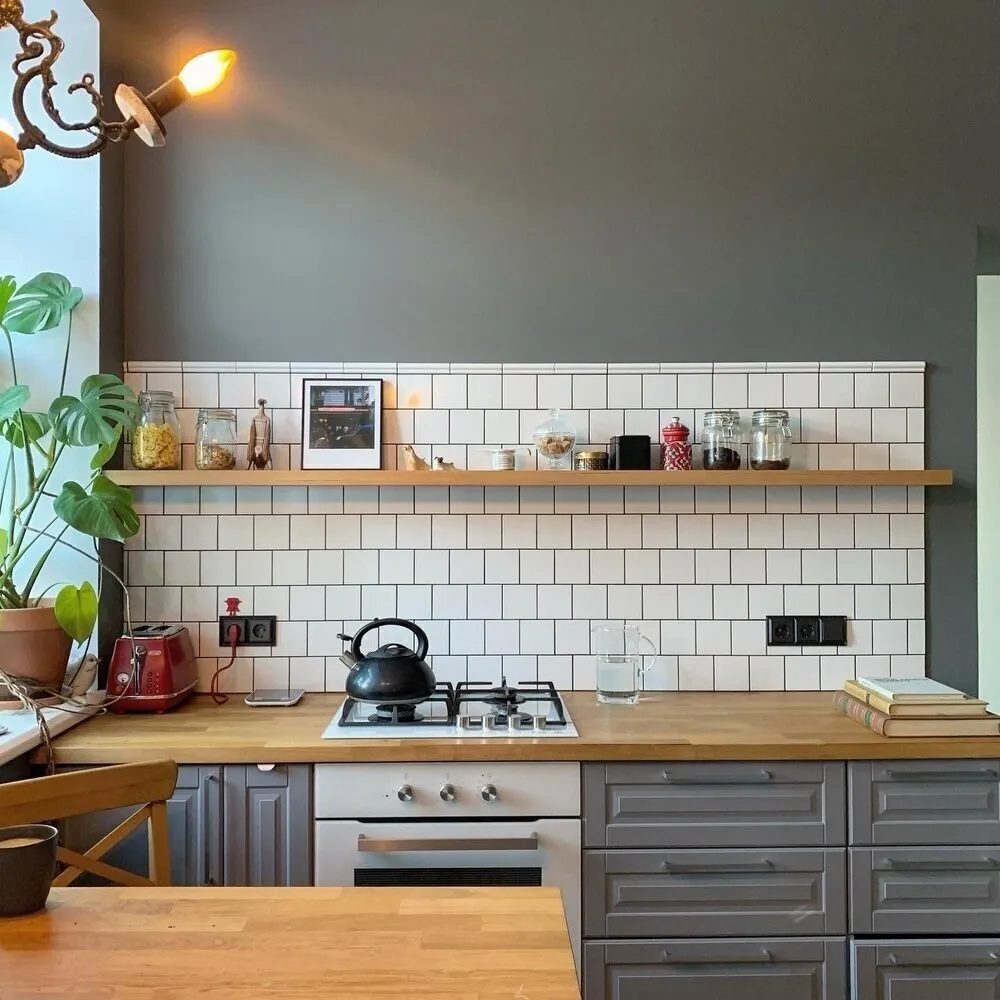
Design: ElenaSecret of design photos
In beautiful shots of kitchens without upper cabinets, you'll never see:
- Grains in regular bags;
- Jars of homemade jam from grandma;
- Piles of food containers;
- A spare set of dishes for guests;
- Rarely used appliances;
- Household items like foil, bags, sponges.
Where does it all go? Three options: either the photos were taken in an empty apartment where no one lives; or owners have a large pantry off-camera. Or it's a second, formal kitchen where they cook elsewhere.
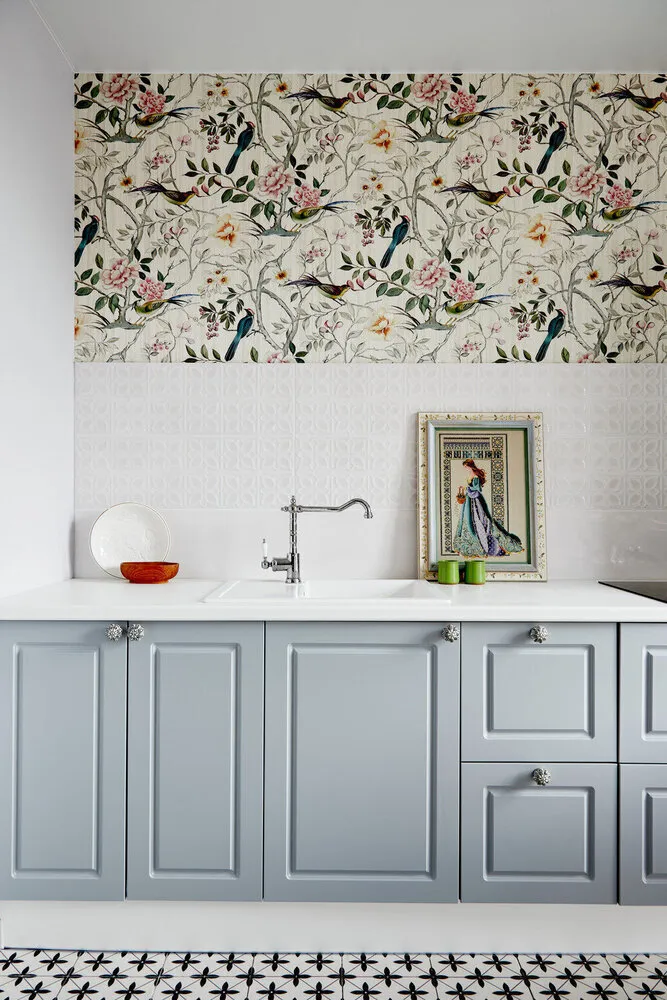
Design: Tatiana Atukina
Who this kitchen really suits
There are categories of people for whom a kitchen without upper cabinets is an intentional choice:
- Minimalists. People who actually own just three plates, two pots, and don’t stock up on food. Such people are rare.
- Owners of large apartments with pantries. If there's a separate 4-6 square meter space for storage — you can do without upper cabinets on the kitchen.
- Those who don't cook. If the kitchen is only used for reheating food and brewing coffee — there's no need for a lot of storage space.
- Owners of very large kitchens. On 20-25 square meters, you can organize enough storage in the lower section and islands.
For others, removing upper cabinets becomes a daily headache.
Practical inconveniences
After six months of life without upper cabinets, typical problems arise:
- Things start to move around. Without space on the kitchen, dishes appear in living rooms, appliances sit on balconies, grains are stored in bedrooms.
- Countertops get cluttered. Everything that doesn’t fit in lower cabinets stays visible. The kitchen looks untidy no matter how often you clean.
- Cooking becomes inconvenient. Needed spices — bend down. Needed plates — crouch. Dozens of extra movements in one meal.
- Tall items have nowhere to go. Bottles with oil, jars, tall glasses don’t fit in lower drawers — they hit the countertop when pulled out.
Savings turn into expenses
Many choose a kitchen without upper cabinets to save money — less furniture, fewer costs. But the savings are illusory.
After a few months you have to buy more:
- Additional shelves in other rooms;
- Storage systems for the pantry;
- More containers and organizers;
- Furniture for the balcony for storage.
In the end, the cost of organizing storage exceeds the price of upper cabinets.
Compromise solutions
If you really want lightness but need functionality, there are intermediate options:
- Partial removal. Upper cabinets only on one side of the kitchen, with an open wall or shelves on the other. Airy and still plenty of storage.
- Upper cabinets to ceiling. Instead of standard 70 cm, make cabinets up to 2.4-2.6 meters high. Visually lighter but more storage.
- Glass fronts. Upper cabinets with glass look lighter than solid ones, but hide contents and protect from dust.
- Cabinets only above work area. Open wall above the dining table or part of kitchen, closed cabinets over stove and sink.
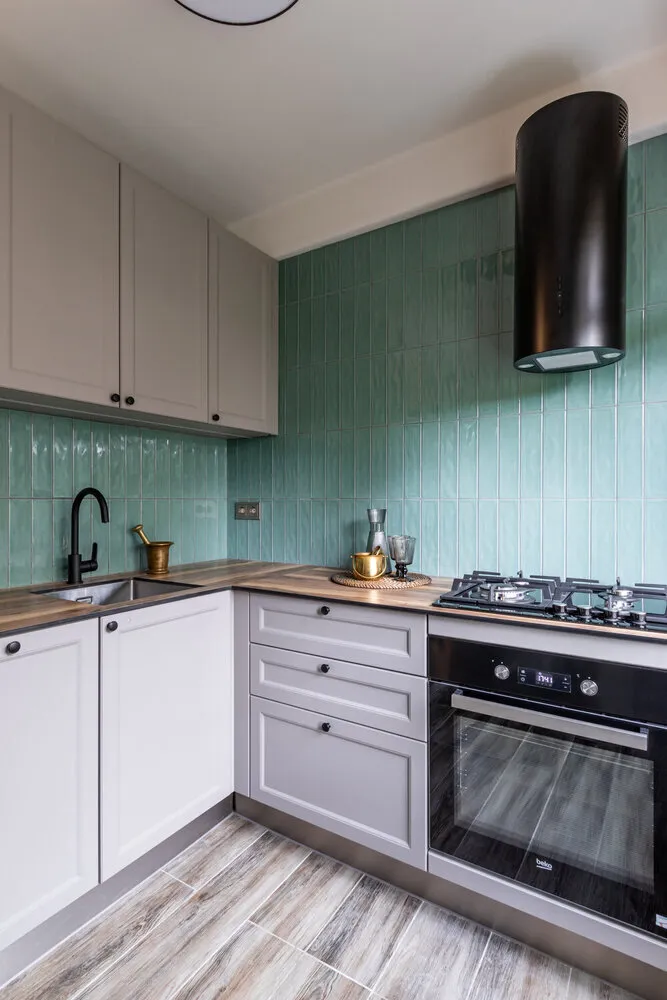
Design: Polina Andreeva
Mistake #1: being inspired by unsuitable examples
Most beautiful kitchens without upper cabinets belong to:
- Professional photographers who don’t cook at home;
- Blogs with a second working kitchen;
- Owners of huge apartments with pantries;
- Families without children who eat out.
Repeating their choice in an ordinary apartment with a family is the path to disappointment.
Mistake #2: underestimating the number of items
Before removing upper cabinets, take everything out and spread it on the floor. Realistically assess volume. Think where it all fits.
People usually think “I don’t have that much dishes,” but when they take them out — it turns out three sets of plates, ten pots and twenty jars with spices.
Mistake #3: believing in willpower
“I’ll keep the open shelves tidy” — a promise that breaks against reality after two weeks.
After work, there's no energy to neatly arrange cups or wipe dust off every jar. Open shelves require time and effort, which is scarce in everyday life.
When it’s not too late to put cabinets back
If you already built a kitchen without upper cabinets and regret it — not all is lost.
- The top shelf can be added later. Cabinet makers make cabinets to fit your kitchen exactly. Yes, it's extra cost, but living in discomfort is more expensive.
- Many return to upper cabinets after a year or two and feel huge relief.
Alternative perspective: defending functionality
A kitchen is a workspace, not a museum. Its main purpose is convenience, not matching a magazine photo.
- Upper cabinets were invented not for luxury but to solve the practical problem of storing maximum items in minimal space.
- Ergonomics proves: storage at eye level and slightly above is most convenient. That's exactly where upper cabinets are.
Honest conclusion
A kitchen without upper cabinets is a beautiful idea for certain living conditions. But for most families in ordinary apartments, it’s an impractical solution.
If you don’t have:
- A separate pantry of 4+ square meters;
- A second working kitchen;
- The habit of eating outside the home;
- Large budget for storage systems.
Then it's better to keep upper cabinets. Yes, they visually take up space. But physically they free up room for all the things you actually need in real life.
Style is good. But convenience matters more than a pretty photo once a year. And there's nothing shameful in that — it’s just honesty with yourself about how you really live.
Cover: Design project by Polina Andreeva
More articles:
 Beauty Secrets of Uma Thurman: How to Look Great at 54
Beauty Secrets of Uma Thurman: How to Look Great at 54 How to Tell if Your Designer Is Cheating You
How to Tell if Your Designer Is Cheating You Preparing Your Apartment for Winter in One Day: Simple Checklist
Preparing Your Apartment for Winter in One Day: Simple Checklist Autumn Indulgence: How Not to Gain 5 Extra Pounds
Autumn Indulgence: How Not to Gain 5 Extra Pounds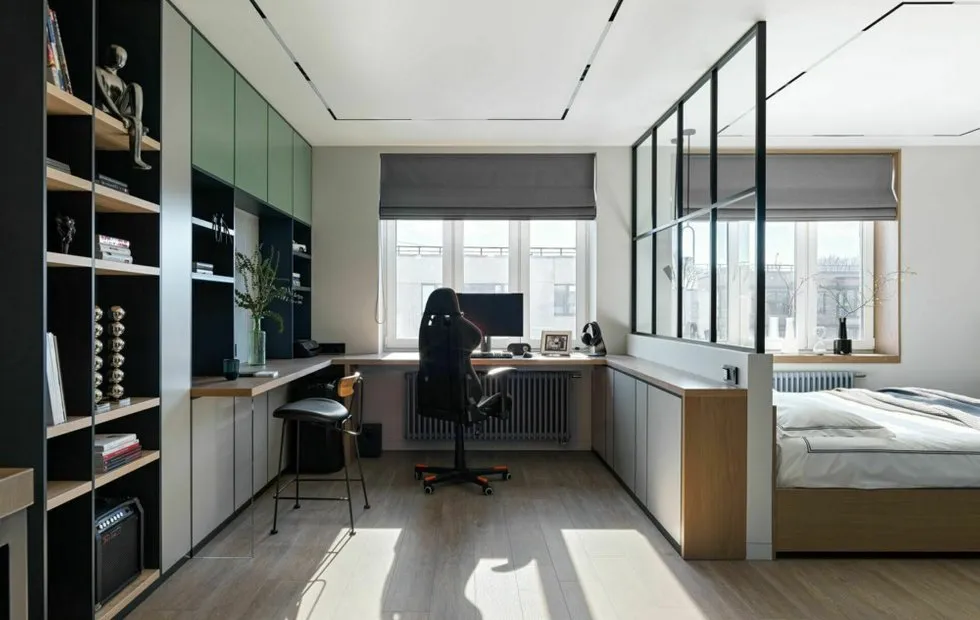 Why Smart Home Becomes a Headache: Honest Experience
Why Smart Home Becomes a Headache: Honest Experience Updated Kitchen for 30 Thousand Rubles: Working Life Hacks
Updated Kitchen for 30 Thousand Rubles: Working Life Hacks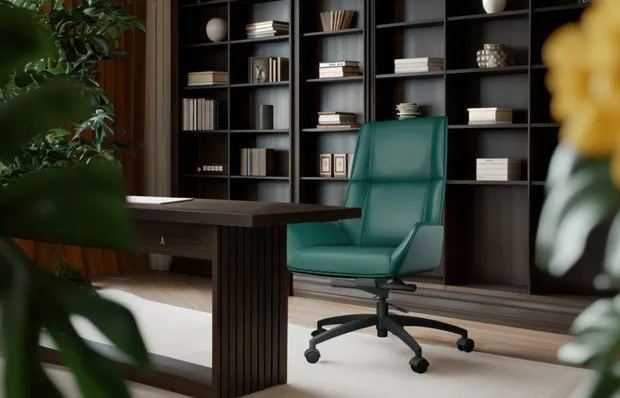 10 Trendy Soft Chairs and Office Armchairs: Comfort and Style for Your Interior
10 Trendy Soft Chairs and Office Armchairs: Comfort and Style for Your Interior Four-legged doctors: how dogs and cats heal our psyche
Four-legged doctors: how dogs and cats heal our psyche